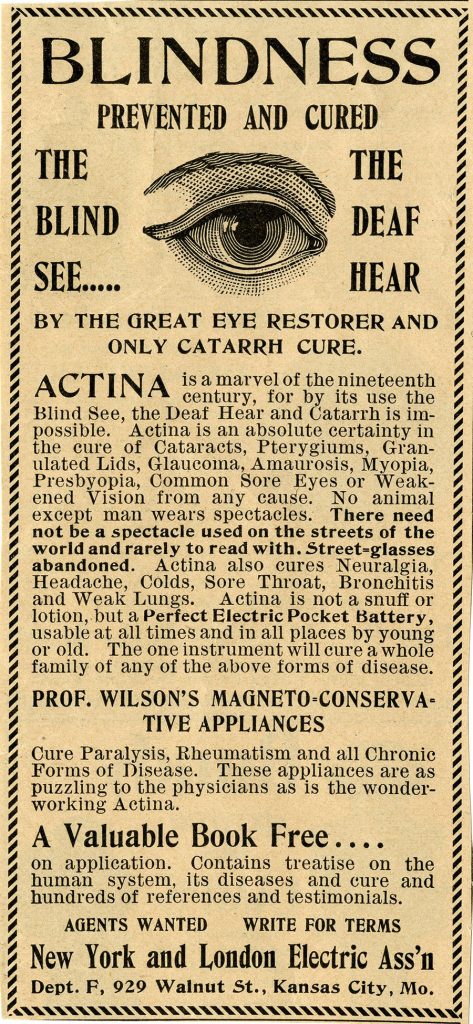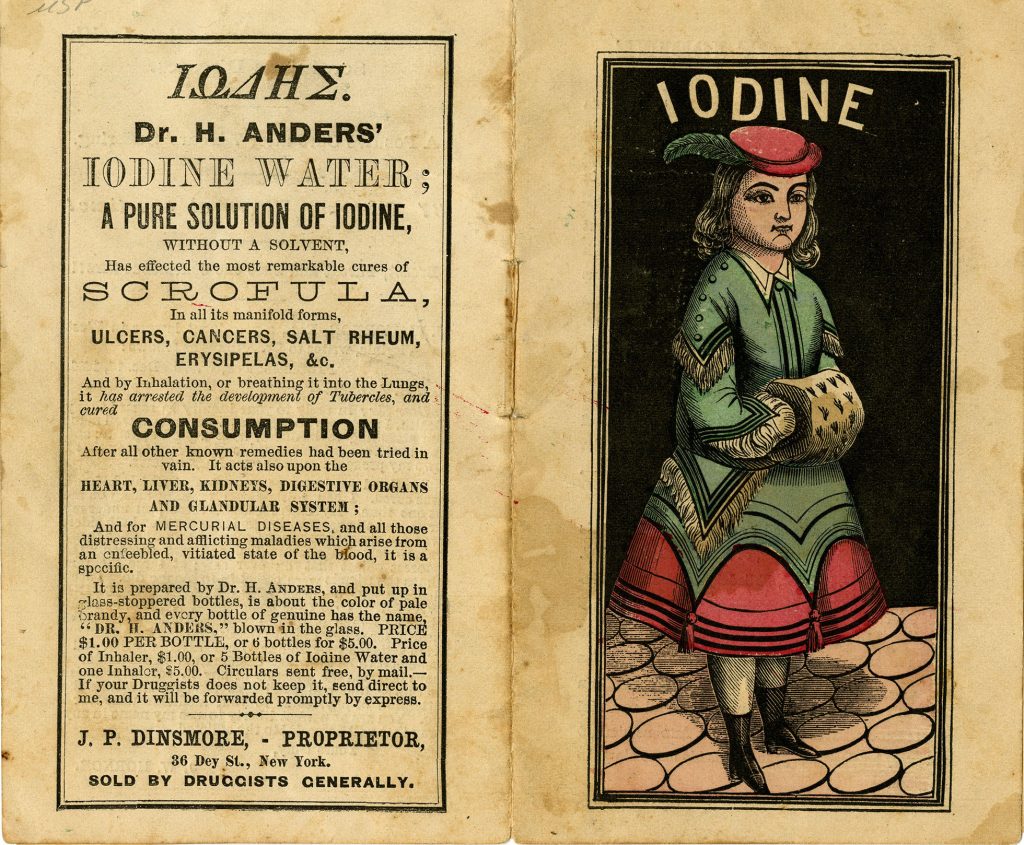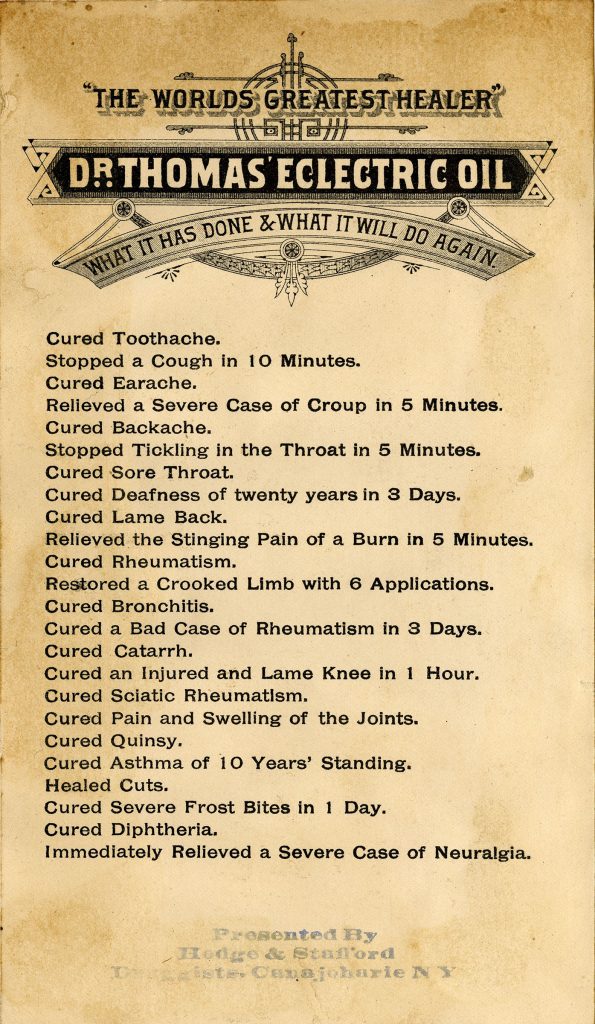By Lisa Wood, MLS
Archivist
Patent medicines were commonly used in the 1800s and early 1900s across the United States. While they were seldom tested for their effectiveness, they claimed to cure a wide range of medical problems. Advertisements for these products are in the collections of many archives and historical libraries, including the Medical Heritage Center Archival Collections. Patent medicine makers were pioneers in the advertising industry who produced promotional materials in numerous formats, including newspaper and magazine clippings, advertising cards, almanacs, catalogs and even toys such as paper dolls. Our curator and dedicated student employees found examples of these varied forms of advertising when they arranged the Paper Dolls and Advertising Collection. Examples from the collection include:
Actina claimed to restore eyesight and hearing loss and cure catarrh. Our curator searched for catarrh online and we believe that this was a term for nasal congestion.
Iodine, which is an antiseptic, could remedy ulcers, cancers, salt rheum, erysipelas, tuberculosis and consumption according to Dr. H. Anders.
Dr. Thomas Electric Oil was more incredible than iodine as it supposedly healed toothache, earache, coughing, croup, backache, sore throat, deafness, burns, rheumatism, bronchitis, catarrh (nasal congestion), asthma, cuts, frostbite, diptheria and neuralgia.
Wikipedia has a list of some common patent medicines and their uses . This list and the Medical Heritage Center’s collection do not begin to represent the total number of these remedies that were manufactured and marketed. While it is amusing to see an advertisement claiming just one medicine could remedy ailments as different as asthma and frostbite, we should remember the number of these cure-alls that were made and their popularity are evidence of a lack of access to medical care, limitations on medical knowledge and no regulations that we sometimes take for granted in the present. The prevalence of patent medicines was dangerous as they could be addictive and remedies with alcoholic and narcotic ingredients were even recommended for young children.
The use of patent medicines declined after 1906 when President Theodore Roosevelt passed the Pure Food and Drug Act which brought the first regulations intended to protect people in the United States from medicines with fantastic claims and contaminated food. In 1930 the government employees doing this work became known as the Food and Drug Administration. However, this law and the FDA had limits on what they could regulate and little authority to take problematic products off the market. President Franklin Roosevelt signed the Federal Food, Drug, and Cosmetic Act in 1938 to increase consumer protections.
To read more about patent medicines and see more examples of advertisements, here are online resources for medical history collections. The Food and Drug Administration also has online exhibits about the history of the organization.
- Hagley Library, History of Patent Medicine
- Digital Public Library of America, Quack Cures and Self-Remedies: Patent Medicine
- National Library of Medicine, Time, Tide and Tonics: The Patent Medicine Almanac in America
- National Museum of American History, Balm of America: Patent Medicine Collection
- University of St. Augustine for Health Sciences, Cures and Curses: A History of Pharmaceutical Advertising in America
- FDA History Exhibits
If you have questions about Medical Heritage Center collections or would like to view collections, please email the Center at mhcmail@osumc.edu for reference services or to schedule an appointment.





Recent Comments